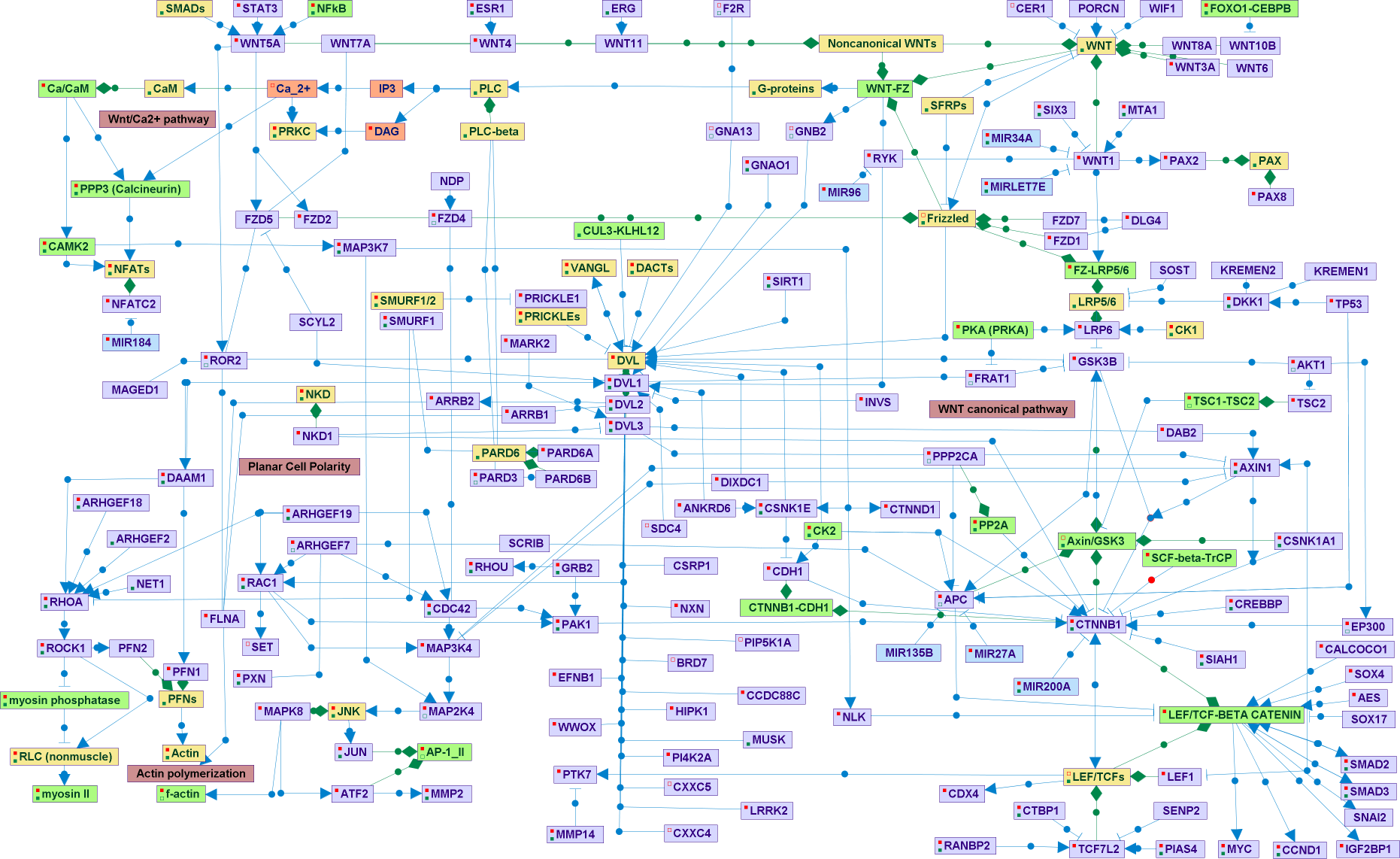Wnt proteins are secreted lipid-modified glycoproteins that are required for basic developmental processes, such as cell-fate specification, progenitor-cell proliferation and the control of asymmetric cell division, in many different species and organs. There are at least three different Wnt pathways: the canonical pathway, (right), the Wnt/Ca2+ pathway (up-left) and the planar cell polarity (PCP) pathway (down-left). In the canonical Wnt pathway, the major effect of Wnt ligand binding to the receptors of the Frizzled and lipoprotein receptor-related protein (Lrp) families is the stabilization of cytoplasmic beta-catenin through inhibition of the beta-catenin degradation complex. Beta-catenin is then enters to the nucleus, activating Wnt-regulated genes (e.g., MYC) through its interaction with TCF (T-cell factor) family transcription factors and concomitant recruitment of coactivators. WNT/Ca2+ signaling is mediated through G proteins and phospholipases and leads to transient increases in cytoplasmic free calcium that subsequently activate the kinase PKC (protein kinase C) and CAMKII (calcium calmodulin mediated kinase II) and the phosphatase calcineurin. The WNT/Ca2+ pathway regulate the ventral cell fates, inhibit the dorsal axis formation, and mediate tissue separation and cell movements during gastrulation. Planar cell polarity (PCP) signaling leads to the activation of the small GTPases RHOA (RAS homologue gene-family member A) and RAC1, which activate the stress kinase JNK (Jun N-terminal kinase) and ROCK1 (RHO-associated coiled-coil-containing protein kinase 1) leading to the remodeling of the cytoskeleton and changes in cell adhesion and motility. The PCP pathway is crucial during major developmental processes like the convergent extension, neural tube closure, eyelid closure, hair bundle orientation in inner ear sensory cells, and hair follicle orientation in the skin.
